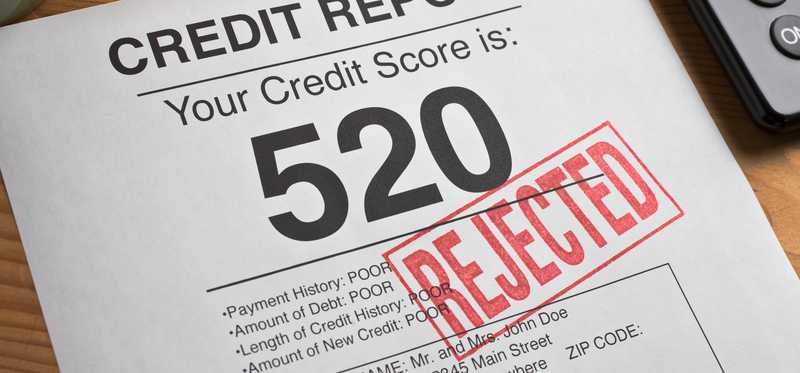15 Steps to Getting Approved for a Mortgage Loan

15 Steps to Getting Approved for a Mortgage Loan
Getting approved for the right mortgage is key to buying the home of your dreams
Most people need a mortgage to purchase a home. But you'll need to take a few steps to ensure lenders are willing to provide you with a loan -- especially at a reasonable rate.
Completing these 15 tasks can help you get the right mortgage to buy the property of your dreams.
5 Stocks Under $49
Presented by Motley Fool Stock Advisor
We hear it over and over from investors, "I wish I had bought Amazon or Netflix when they were first recommended by The Motley Fool. I'd be sitting on a gold mine!" It's true, but we think these 5 other stocks are screaming buys. And you can buy them now for less than $49 a share! Click here to learn how you can grab a copy of "5 Growth Stocks Under $49" for FREE for a limited time only.
Previous
Next

1. Decide how much you want to borrow
The first thing you need to do is decide how much you're interested in borrowing.
While the bank will assess your credentials to decide how much to lend you, you may want to keep your loan balance lower than the maximum they'll allow in order to leave more money for other financial goals such as retirement investing.
Previous
Next

2. Save up a down payment
The majority of lenders require you to put some money down on a loan. The specific amount can vary from as low as 3% to 20% or more.
A higher down payment usually makes it easier to qualify for a loan as you'll appear a more qualified buyer. You'll also have a wider selection of potential lenders if you aren't restricted to those requiring a low down payment only.
Putting at least 20% down also enables you to avoid the added cost of private mortgage insurance, which lenders require borrowers purchase to protect the lender's financial interests in cases of low-down-payment loans.
Previous
Next

3. Check your credit report and score
Mortgage lenders evaluate your credit history when determining whether to allow you to borrow money to buy a home. A higher score makes mortgage loan approval easier, while a lower score can disqualify you or leave you with fewer borrowing options.
You should check your credit report and score to determine where you stand before applying for a mortgage. That way, you can not only decide which lenders are likely to approve your loan but also make changes to improve your score if needed.
ALSO READ: The Complete Guide to Understanding Your Credit Score
Previous
Next

4. Correct any credit report errors
Mistakes on a credit report are more common than you'd think. If you identify any errors on your credit report -- such as an inaccurate report of a late payment or an account that doesn't belong to you -- you'll want to take steps to correct the mistakes.
It can take time to remove inaccuracies from a credit report, so it's best to do this well in advance of applying for a loan so you can maximize the chances of mortgage approval.
Previous
Next

5. Improve your credit score if necessary
If your credit score is below around 620, you'll have a very limited choice of lenders. And if it's below 700 to 740, you'll pay more for a loan than if your score was higher.
You should work to improve a low score before applying for a loan to maximize your chances for approval.
There are a number of approaches to quickly improving your score, such as writing a goodwill letter asking lenders to voluntarily remove a record of a late payment or asking someone with good credit to add you as an authorized user on one of their accounts.
5 Stocks Under $49
Presented by Motley Fool Stock Advisor
We hear it over and over from investors, "I wish I had bought Amazon or Netflix when they were first recommended by The Motley Fool. I'd be sitting on a gold mine!" It's true, but we think these 5 other stocks are screaming buys. And you can buy them now for less than $49 a share! Click here to learn how you can grab a copy of "5 Growth Stocks Under $49" for FREE for a limited time only.
Previous
Next

6. Pay down debt
As mentioned, lenders look at your credit score. Repaying your debt helps you improve that score.
Lenders also look at your debt-to-income ratio. That's monthly debt payments relative to income. A ratio above 36%, including housing costs and other debt, can make it much harder to get a loan approval and leave you with a more limited choice of lenders.
As a result, paying off as much existing debt as you can maximizes the chances you'll have a wide choice of loan options at competitive rates.
Previous
Next

7. Stick with your current job
Lenders want to see stability when they evaluate your income.
If you haven't been with your job and earning the same salary for around two years, you may not get credit for most or all of your earnings when lenders are evaluating your debt-to-income ratio and deciding whether to give you a mortgage.
If you want to maximize your chances of loan approval, try to keep your employment history steady for as long as you can before applying for a home loan.
Previous
Next

8. Research your loan options
There are different types of loans, including conventional and government-backed options such as Federal Housing Administration (FHA) or Veterans Affairs (VA) loans.
Conventional loans tend to have lower upfront fees, and more lenders offer them -- but they require more solid financial credentials for approval.
Government-backed loans may be easier to get if you have a low down payment, poor credit, or other issues that may make conventional lenders wary.
Decide which of these types of loans you want to apply for and find lenders offering them.
Previous
Next

9. Choose between a fixed or adjustable rate loan
Some mortgages have a fixed interest rate, which stays the same the entire time you're repaying the debt. Others are adjustable-rate mortgages (ARMs), which guarantee your rate will stay the same for the first few years, but after that time, the rates adjust along with a financial index.
ARMs can have a lower starting rate but are much riskier. If you think you'll move or refinance soon, they can make sense -- especially since they can sometimes be easier to get approved for because the monthly payment is lower initially. But you'll need to decide whether you want to take a chance that rising rates could make your loan more expensive.
Previous
Next

10. Avoid applying for new credit
When you apply for credit, you get an inquiry on your credit report. Getting too many inquiries in a short time reduces your score and hurts your chances of loan approval.
If you apply for new loans, you could also adversely affect your debt-to-income ratio and hurt your chances of loan approval that way.
It's best to steer clear of taking out any loan shortly before buying a home if you want to maximize the chances of mortgage loan approval.
5 Stocks Under $49
Presented by Motley Fool Stock Advisor
We hear it over and over from investors, "I wish I had bought Amazon or Netflix when they were first recommended by The Motley Fool. I'd be sitting on a gold mine!" It's true, but we think these 5 other stocks are screaming buys. And you can buy them now for less than $49 a share! Click here to learn how you can grab a copy of "5 Growth Stocks Under $49" for FREE for a limited time only.
Previous
Next

11. Don't charge too much on your current credit cards
Charging a lot on your current cards also hurts both your credit score and debt-to-income ratio. Ideally, you should use less than 30% of your available credit to get the best score.
Steering clear of maxing out your credit cards and avoiding running up your loan balances before applying for a mortgage loan can help to ensure you're able to get the home loan you're looking for.
Previous
Next

12. Get quotes from multiple lenders
Mortgage rates and qualifying requirements vary a lot from one lender to another.
If you want to have the best chance of both getting approved for a loan and getting the lowest possible interest rate, it's best to get quotes from at least three or four lenders before committing to borrow.
Previous
Next

13. Complete the pre-approval process
Once you've compared loan offers, you'll want to go through the pre-approval process. This process is usually done before you find a specific home to purchase, and it involves providing financial details to your lender.
Pre-approval doesn't guarantee you'll get a final loan, but it does mean a lender will allow you to borrow if all goes well during the rest of your transaction. In most situations, you'll also need a pre-approval letter when submitting an offer to buy a home.
Previous
Next

14. Find a property and make an accepted offer
Lenders don't just give you a mortgage -- they give you a mortgage to buy a specific home.
As a result, you'll need to find a property within your budget and make an offer that gets accepted before you can complete the process of securing a home loan.
It's generally best to make your offer contingent on actually getting your financing so that you don't risk losing your deposit if you can't follow through with the loan because your mortgage approval doesn't come through.
Previous
Next

15. Get an appraisal on your chosen home
Finally, you'll need to get the home you're interested in appraised.
An appraisal involves a professional coming in, comparing the property to others that have been recently sold, and determining its fair market value.
Your home needs to appraise for enough to serve as collateral on your home loan for a lender to approve your mortgage. Once your home has been appraised, and your financial credentials have been confirmed, you should be all set with getting the home loan you need to buy the property you've been dreaming of.
5 Stocks Under $49
Presented by Motley Fool Stock Advisor
We hear it over and over from investors, "I wish I had bought Amazon or Netflix when they were first recommended by The Motley Fool. I'd be sitting on a gold mine!" It's true, but we think these 5 other stocks are screaming buys. And you can buy them now for less than $49 a share! Click here to learn how you can grab a copy of "5 Growth Stocks Under $49" for FREE for a limited time only.
Previous
Next

Check these tasks off your to-do list ASAP
Hopefully, with the right mortgage, buying a home will turn out to be a great financial decision for you.
If you're hoping to purchase a property, it's important to check all these tasks off your to-do list ASAP so that you can maximize your chances of getting approved for a loan at an affordable rate.
Previous
Next
Invest Smarter with The Motley Fool
Join Over Half a Million Premium Members Receiving…
- New Stock Picks Each Month
- Detailed Analysis of Companies
- Model Portfolios
- Live Streaming During Market Hours
- And Much More
READ MORE
HOW THE MOTLEY FOOL CAN HELP YOU
-
Premium Investing Guidance
Market beating stocks from our award-winning service
-
The Daily Upside Newsletter
Investment news and high-quality insights delivered straight to your inbox
-
Get Started Investing
You can do it. Successful investing in just a few steps
-
Win at Retirement
Secrets and strategies for the post-work life you want.
-
Find a Broker
Find the right brokerage account for you.
-
Listen to our Podcasts
Hear our experts take on stocks, the market, and how to invest.
Premium Investing Services
Invest better with The Motley Fool. Get stock recommendations, portfolio guidance, and more from The Motley Fool's premium services.